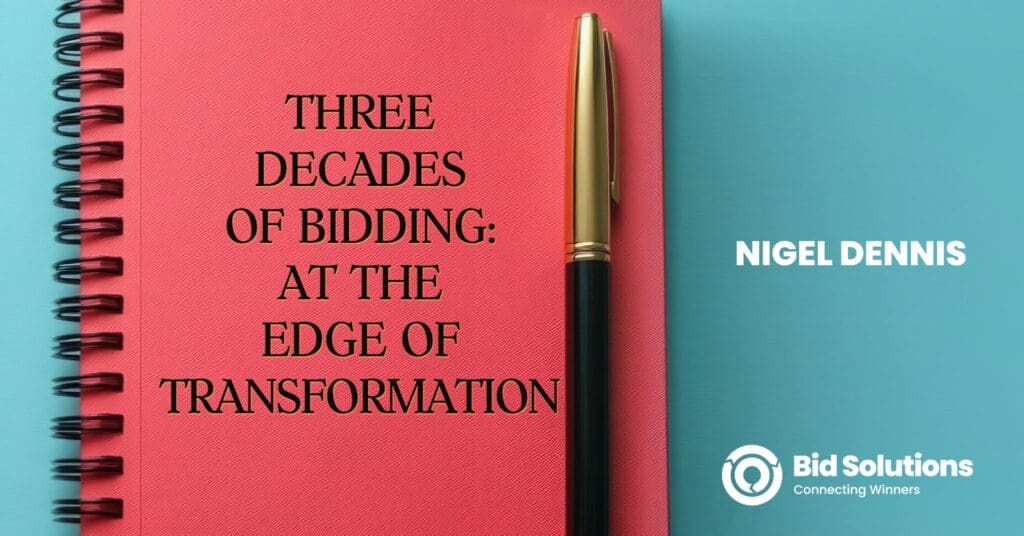For the past 20 years, I have helped global businesses compete for multimillion and billion-dollar tendered contracts across the public and private sectors. During this time, I have noticed an interesting trend. Some companies distinguish themselves as perennial performers, seemingly immune to the prevailing economic conditions. When attempting to decode what lies behind such impressive and sustained success, I discovered ‘Choosing to grow: The leader’s blueprint’, an article by McKinsey and Company 1. It neatly encapsulates many of the practices I’ve witnessed first-hand over the years, beginning with a single trait that stands out as a cornerstone of sustained out-performance.
Lead with a strategic orientation
The authors describe a three-step process for achieving sustained profitable growth, the first being to make a conscious choice to set an aspirational mindset and culture. High-performing companies don’t float in the economic tide. Their leaders are purposefully ‘left-shifting’ their thinking to the earliest stages of value creation, moving their focus from day-to-day delivery to strategically designing a growth-based future fuelled by a blueprint comprising actions, timelines and targets.
Having a clear and compelling vision of the future aligns the entire organisation around a common goal. Importantly, it also permits employees to focus on decisions and actions that provide the greatest contribution to business growth.
For the C-suite, having a strong strategic intent delivers many benefits. For a CEO struggling with a conservative organisation, a growth-focused strategy necessitates new ways of thinking, experimentation and risk taking. This often leads to innovations that create new revenue streams, increased market share and an improved culture.
For a CFO, a growth-focused strategy helps them make clear-sighted investment decisions that recalibrate the balance between short-run returns and long-run growth.
And a growth-focused strategy also helps a COO, by requiring siloed departments to be more agile, collaborative and efficient as they streamline processes to create new customer-oriented solutions.
What does this have to do with tendering?
For many companies, tender earned revenue is often the largest contributor to overall revenue. So when it comes to growth, tendering represents a substantial and important revenue lever. But how often do companies approach their annual tendering activities with anything close to strategic intent? And where does the customer fit in all of this? The McKinsey article cites ‘knowing your customer as a person’ as one of five key mindsets shared by growth leaders. This highlights the importance of customer-centricity to growth ambitions.
Here’s a quick tendering example tying these ideas together.
Company A is a delivery and capability focused organisation. Their business development team monitors tender publishing websites in search of new opportunities. When a tender of interest is published, they produce a tender submission document promoting their current capabilities, making a case for why these are the right fit for the customer. The result? Their submission is compliant, delivery and current capability focused, but hardly compelling. This is not surprising. It represents their internal focus.
Contrast that with Company B, which is a growth and customer focused organisation. They design their tendering pipeline and future capability development against emerging and understood customer challenges. They create and offer solutions to customer problems based on a nuanced understanding of their customers’ environment. And they take the initiative, freely sharing ideas and proactively testing their solutions prior to an opportunity coming to tender. The result? Their tender submissions are deeply empathetic to the buyer’s challenges, offering evidenced solutions that are tightly aligned to the outcomes sought by their buyer.
So, who would you choose?
It’s not hard to see which approach resonates more. With Company A, the buyer has no reason other than to make a transactional, price-based decision. So that’s what they do. With Company B, the buyer sees a solution based on a keen understanding of their issues and a resolute commitment to solving them. This gently guides the buyer to approach the evaluation decision with a value perspective.
Over time, Company B achieves a higher tender win rate, giving it the choice to compete for fewer contracts to achieve the same revenue result, or reinvest its improved win-rate revenue to grow its top-line, tender-earned revenue position even further. And the attendant benefit is that the more practised it becomes at winning tenders, the more efficient it becomes, with these savings contributing directly to profitability.
So, are you going to do anything about it?
Adopting a strategic and growth-focused orientation prioritising customer success leads to smarter investments, a strategically aligned pipeline of opportunities, and an engaged and focused workforce. If your business is focused on delivery rather the bigger picture and the worlds your customers operate in, we can help you change perspective. Doing so requires you to think left, not right. But this simple left-shifting orientation can unlock a huge amount of latent growth and, in doing so, bring substantial rewards.
RELATED BLOG: In Left-shifting your way to revenue growth – Part 2, Peter Blunden looks deeper into how a left-shifted focus, aligned with your organisation’s bidding function, leads to sustained business success.
- Birshan M, Cvetanovski B, Doherty R, Freundt T, Gaeta A, Kelly G, Roth E, Seth I. and Zucker, J. Choosing to grow: The leader’s blueprint. July 7, 2022, accessed June 15, 2023. https://www.mckinsey.com/capabilities/growth-marketing-and-sales/our-insights/choosing-to-grow-the-leaders-blueprint







